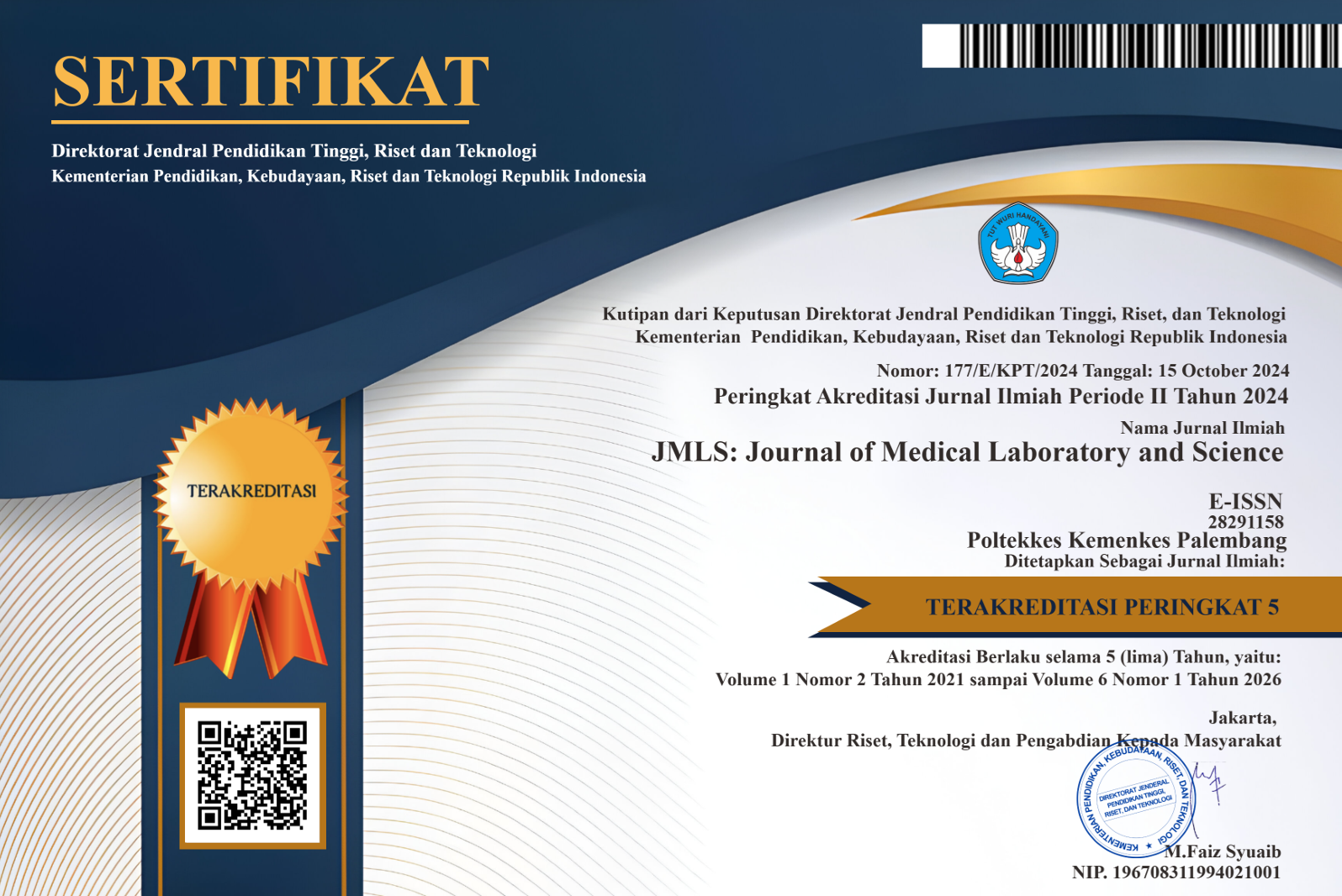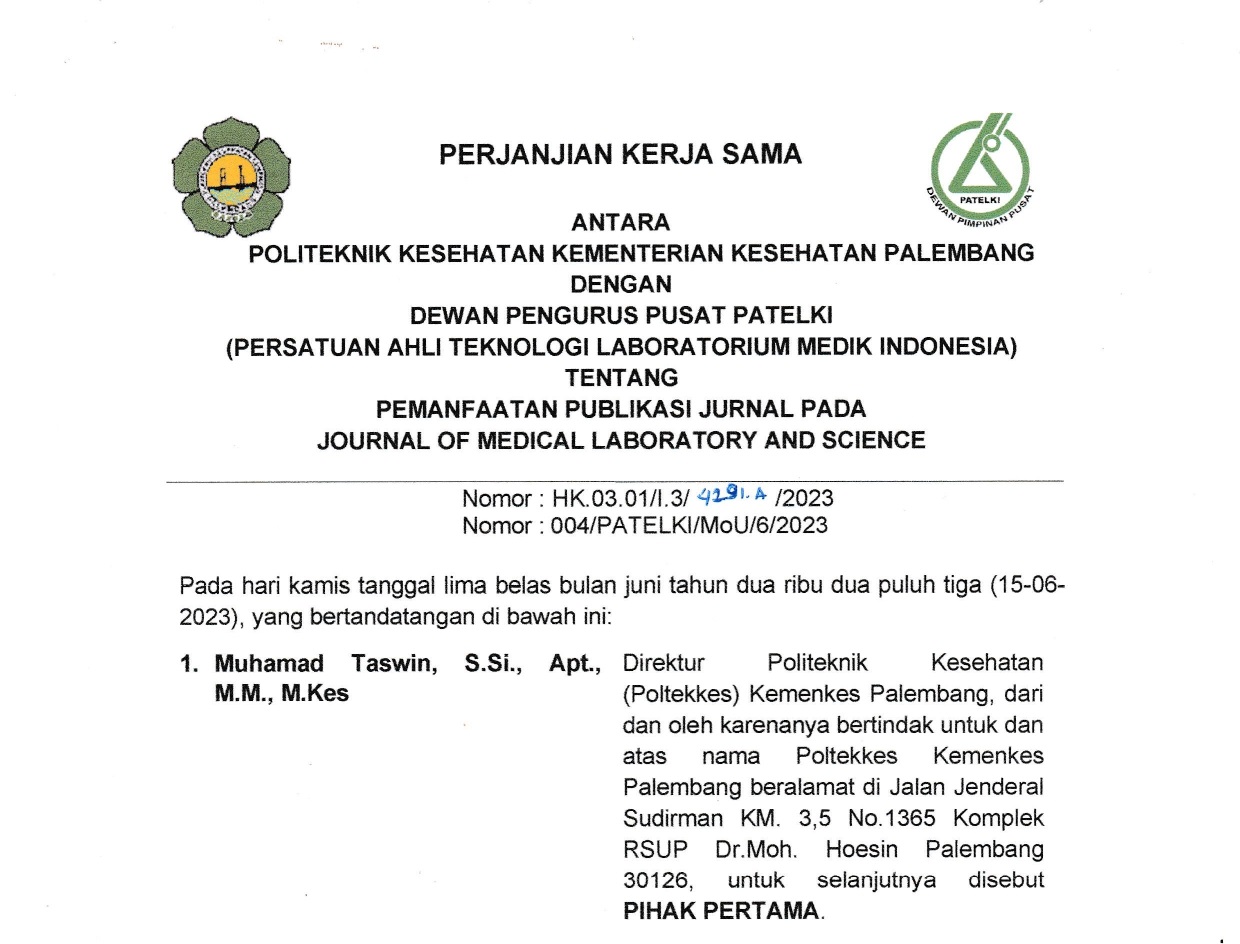THE AUTOANTIBODY AND ITS DETECTION IN MYASTENIA GRAVIS: LITERATURE REVIEW
Abstract
Latar Belakang: Miastenia Gravis (MG) adalah penyakit autoimun yang terbatas pada organ tertentu di mana autoantibodi menyerang reseptor asetilkolin nikotinat di sambungan neuromuskular (NMJ). Gangguan fungsi reseptor ini menyebabkan kerusakan pada transmisi neuromuskular, menyebabkan kelelahan dan peradangan otot rangka, serta produksi antibodi serum terhadap antigen otot. Kelelahan pada otot, seperti pada mata, tenggorokan, bola mata, dan otot ekstremitas lainnya, memburuk saat beraktivitas namun bisa membaik dengan istirahat. MG merupakan penyakit langka dengan insiden 5,3 per juta orang per tahun dan prevalensi 77,7 per juta orang per tahun. MG bisa disebabkan karena kelainan bawaan neuromuscular maupun karena adanya autoantibodi. Patofisiologi miastenia gravis ditentukan oleh jenis autoantibodi pada penderita. Diagnosis MG terutama didasarkan pada penilaian klinis dan pengujian antibodi serum terhadap reseptor asetilkolin (AChR), tirosin kinase spesifik otot (MusK), dan lipoprotein densitas rendah 4 (LPR4) dan autoantibodi lain seperti agrin, titin, Kv14. Ryonadine yang dianggap memiliki keterlibatan dalam pathogenesis MG. Beberapa metode pengujian yan digunakan untuk mendeteksi autontibodi pada penderita MG yaitu RIPA, ELISA, FIPA dan CBA.
Copyright (c) 2024 Journal of Medical Laboratory and Science

This work is licensed under a Creative Commons Attribution-ShareAlike 4.0 International License.
Authors who publish with this journal agree to the following terms:
- Authors retain copyright and grant the journal right of first publication with the work simultaneously licensed under a Creative Commons Attribution License that allows others to share the work with an acknowledgement of the work's authorship and initial publication in this journal.
- Authors are able to enter into separate, additional contractual arrangements for the non-exclusive distribution of the journal's published version of the work (e.g., post it to an institutional repository or publish it in a book), with an acknowledgement of its initial publication in this journal.
- Authors are permitted and encouraged to post their work online (e.g., in institutional repositories or on their website) prior to and during the submission process, as it can lead to productive exchanges, as well as earlier and greater citation of published work














